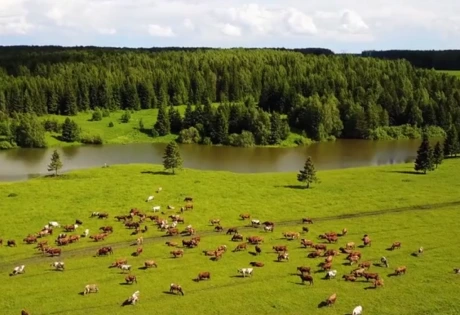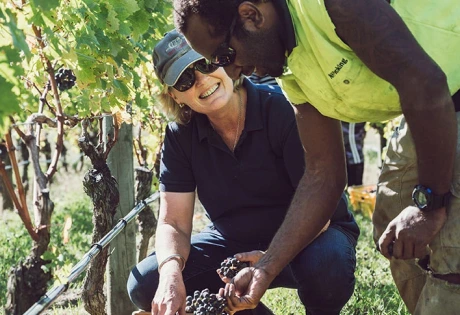Manage Holistically
At Ashfount Investments, we believe that learning to manage holistically is the best way for people in the farming and food space to benefit the land, the environment – and their business!
But why is holistic management so important? How is it different from “conventional” farming practices? And, why are more and more farmers choosing to transition to a holistic management way of working?
One of the core pillars of regenerative farming is relearning how to view and manage businesses within a holistic framework. Holistic management is a way for farmers, ranchers and everyone in the farm space business to make the best possible use of resources.
Holistic management is a framework that encourages decision making that is socially, economically and environmentally balanced and sound. It encourages participants to rethink the way they view resources and to see themselves as a steward of the land, working with natural cycles.
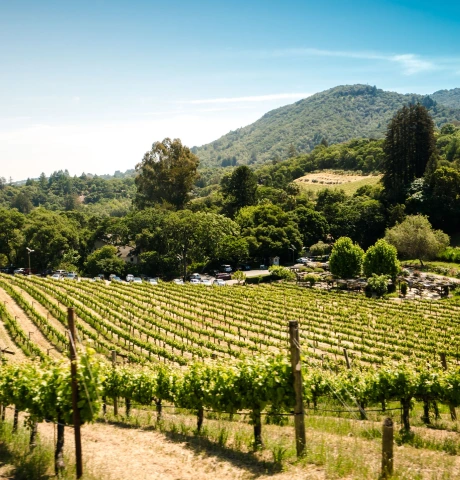
We recognize each individual contribution as part of a greater ecosystem, whether it be the microbes that live in our soil, to the way we manage our businesses – it is all part of our belief in managing holistically.
The Way We Currently Farm is Not Working
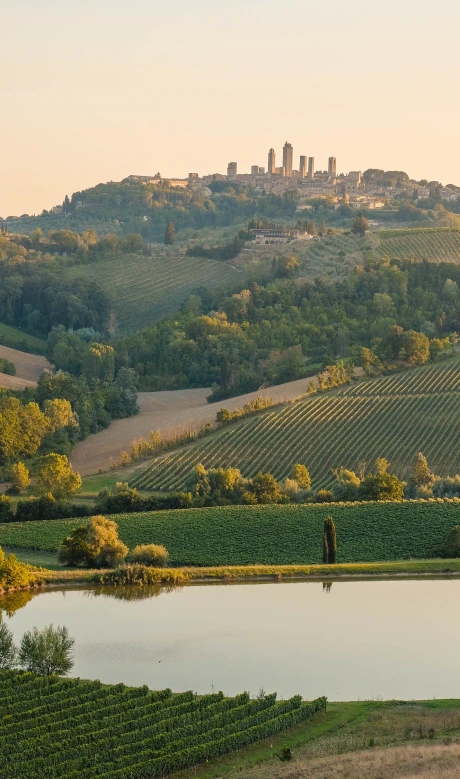
Since the industrial revolution, farming practices around the globe, and especially in the U.S., have developed into cultures which have become highly individualized and specialized.
In an article in The Conversation, Stephanie Anderson explains how over the last 100 years or so farmers have fundamentally changed the way they farm. Due to increasingly globalized food markets, and the availability of new technology, farmers began to specialize in select commodity crops. This had the advantage of initially maximizing profits, but added extra vulnerability to businesses if a crop failed.
Farmers began to rely more heavily on agribusiness retailers for support, and many smaller farms were absorbed into larger ventures as they went bankrupt or were unable to keep pace with the changing agricultural business landscape.
As the generations passed, many new pieces of technology were introduced, as well as new agrochemicals. This resulted in farming practices becoming increasingly specialized and a move away from holistic practices. Farmers in the U.S. today are often trapped into narrowly focused, large farming projects, with ever-increasing loans and debts, and a dependence on outside technology and support to keep their business afloat.
We believe in creating positive processes that support slow, consistent, healthy growth, with the end goal of providing a service or a product that our consumers and business partners can rely on.
Specialized Industrial Farming is Damaging Our Environment
Large monoculture farming is affecting many farmer’s knowledge, skills, and economic earning power. And, it is also damaging our soil and contributing to climate change and the desertification of land.
From a sustainability point of view, many farmers feel they can no longer ignore the kinds of impact industrialized monoculture farming is having. And, when placed into longer-term context, land which is farmed using these intensive methods is becoming less fertile as years go by – affecting crop yields and their quality as well as causing issues with livestock and soil degradation.
The stresses of working in the agriculture and food space in the U.S. using industrialized farming techniques has led to farmers searching for a better option. The answer is regenerative agriculture.
Regenerative agriculture is an ethos and series of practices that place healing our land and working with nature at the heart of farming and agricultural ventures. And, because it mimics nature by working with the natural processes of plants and animals, it’s necessary for anyone who wants to practice it to learn to think and manage holistically
What is Holistic Management?
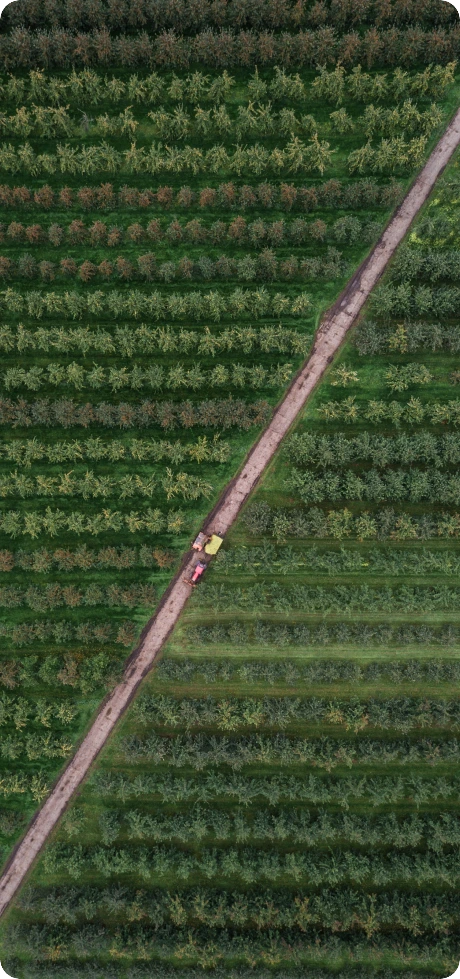
“One key to understanding holistic decision making is remembering the first insight: the world functions in wholes. Each of us is responsible for managing a whole— beginning with ourselves as individuals. And beyond that first whole, there is a larger whole, a farm, a family or a business.”(Holistic Management International)
Holistic management is the cornerstone of regenerative agricultural practices. It’s not possible to restore the land and generate better, healthier soil and produce unless you respect natural cycles. To do this we need to think holistically.
In essence, holistic management is about working with our resources in a way that carefully considers how each different part relates to another and encouraging healthy choices that impact business health across the board. This means not only encouraging healthier soil, livestock, and agriculture but also focusing on the health of business owners, workers, and the local community.
Holistic management means becoming a steward of the land, and a part of the natural cycle – rather than fighting the land and forcing it to yield to you by using ever-inreasing unnatural methods.
“I completely overlooked the most important of all factors, the keystone of the whole operation: that our farm was a complex and dynamic series of ecological systems, and that our landscape actually functioned in specific but sensitive ways.”(Charles Massy)
How Does Holistic Management Work?
The practice of holistic management was developed and championed in particular by Allan Savory, of the Savory Institute. Savory spent many years of studying desertification and the effects of soil erosion and modern farming methods were having on the land he farmed in Zimbabwe.
Savory realized that by developing systems using a holistic approach and including planned grazing of livestock, many of the effects of desertification could be reversed. His system is based on four key insights:
A holistic perspective is essential in management. If we base management decisions on any other perspective, we are likely to experience results different from those intended because only the whole is reality.
In brittle environments, relatively high numbers of large, herding animals, concentrated and moving as they naturally do in the presence of pack-hunting predators, are vital to maintaining the health of the lands we thought they destroyed.
Environment may be classed on a continuum from nonbrittle to very brittle according to how well humidity is distributed throughout the year and how quickly dead vegetation breaks down. At either end of the scale, environments respond differently to the same influences. For instance, allowing land to rest restores it in nonbrittle environments but damages it in very brittle environments.
In any environment, overgrazing and damage from trampling bear little relationship to the number of animals, but rather to the amount of time plants and soils are exposed to the animals.
The Importance of Planned Grazing
Savory argues that utilizing planned grazing that respects nature and works with natural cycles is essential for land health and soil regeneration. One of the reasons that planned grazing is so important is because it mimics the way animals moved across the land and helped to build the diversity that is needed for soil health in antiquity.
Historically speaking, land is a seasonal environment where plants, trees, and grasses all developed together over millennia. Animals, in particular, evolved alongside pack-hunting predators which are largely gone from most farming environments today.
In the past, animals protected themselves by bunching. As they bunched, the animals would urinate and defecate on the ground, leading to regular herd movements. This had the dual benefit of adding nutrients in the form of dung into the soil and mitigating overgrazing – where animals stay too long in one place and damage the soil.
Savory argues that this is the reason why getting rid of livestock is not the answer to our globe’s soil health issues. Instead, farmers should seek to carefully plan grazing so that livestock can biologically cycle grass and other plant matter, without exhausting the land.
Planned grazing is one of the main cornerstones of any holistic management. But, it is one part of the whole ecosystem. Farmers who wish to develop holistic practices must consider plenty of other factors alongside the planned grazing of livestock.
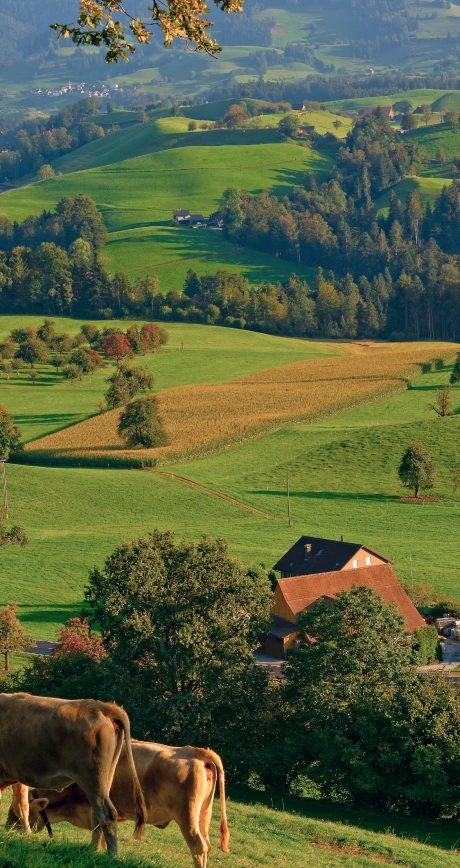
Holistic Management Systems
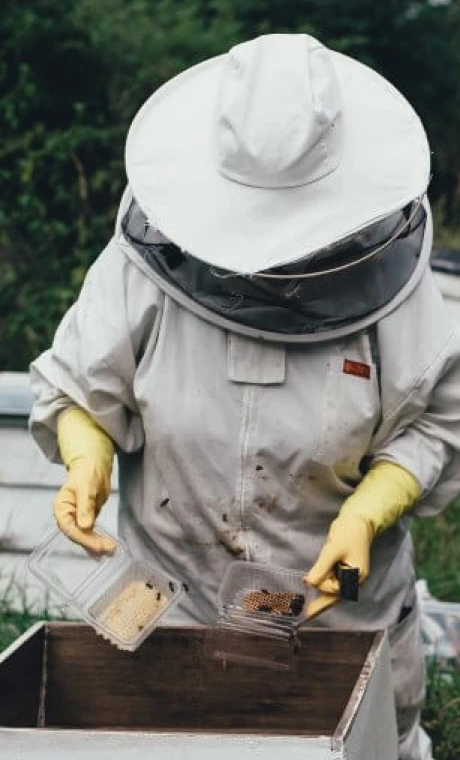
Because managing holistically requires balancing so many factors, different advocates of regenerative farming have developed frameworks that farmers can use.
Most begin with asking the farmer to plan for a holistic goal. This could include getting to know the land and soil on which the business is based and learning how a farm’s unique environment is constructed.
This would include checking soil cover, moisture, fertility, and which natural resources are available and how they are benefitting or diminishing resources. By understanding these fundamentals, each farm can make decisions that will positively impact the land and resources in the short-term and well into the future.
For people in the food space who are used to monoculture farming, this can be a completely different way of viewing the land, livestock, and resources. But, by using a planned framework and developing goals which are regularly tested, adjustments can be made towards reaching the holistic goal.
There are different ways of developing frameworks and no one method that each farmer uses. But an effective framework takes into account core areas of land management and helps provide guidelines for planning that takes those elements into account.
Holistic Management International (HMI) for example, identifies 8 principles and practices for resource management within a holistic framework:
Nature functions in wholes
Understand the environment you manage
Define what you are managing
State what you want
Aim for healthy soil
Consider all tools
Test your decisions
Monitor your results
One of the really interesting aspects of these kinds of frameworks is the way they encourage farmers to think differently about the land and their resources. For example, when considering the principle – “consider all tools”, HMI reminds farmers that tools, in this case, does not only mean their machinery or other farm equipment. It also means the tools of human creativity, and the animals and other living organisms that are present on the land.
For example, on one fruit farm in Cornwall, England, chickens are being introduced because they help maintain grass and feed on sawflies which tend to feed on the gooseberries that the farm grows. In this way, animals are seen as essential parts of the ecosystem that can be encouraged in the natural behavior to work as positive tools for the land.
What Are the Benefits of Holistic Management?
For some farmers who are considering transitioning to holistic management systems, there is a worry that by doing less to the land (in the form of intensive farming, agrochemicals, and industrial techniques) their business will suffer financially. However, for many farmers, this is not the case.
Farmers are discovering that by working with nature, rather than fighting and forcing it via industrial methods, they build the healthy ecosystems needed to encourage better yields and a better quality of produce. Less input from heavy machinery and pesticides also means less money spent on equipment, maintenance, and chemicals, as well as the labor needed to apply and monitor these practices.
Having animals on the land that take care of tasks that would normally be managed via chemical or mechanistic input saves time as well as building the diversity needed to naturally manage the land and create better health.
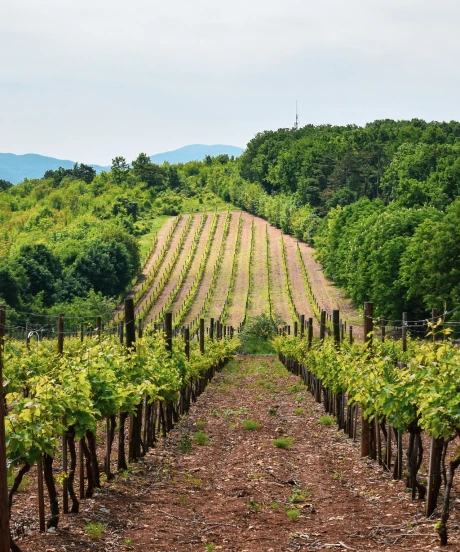
Other benefits of holistic management can include:
Animals that can graze naturally and live away from confined spaces are less stressed and tend to have fewer medical problems.
This can help to not only mitigate the effects of climate change and soil degradation but in many cases, actively reverse it.
This can include less worry about debt, about health effects from agrochemicals, a closer connection to the land and livestock. Many holistic managers thrive when they are nurturing the land and positively contributing to producing healthy, wholesome food.
In any environment, overgrazing and damage from trampling bear little relationship to the number of animals, but rather to the amount of time plants and soils are exposed to the animals.
Many holistic farmers choose to sell directly to their local community and cut out large companies that force restrictions on how produce is farmed. This means that they get the benefit of closer ties with the local community, and enjoy the opportunity to share knowledge and education about our land and how to manage it responsibly.
Can Holistic Management Systems
Ever Compete with Industrial Farming?
Many people in the agriculture space believe that only “conventional” farming – that is, modern, heavily industrialized farming techniques, can hope to feed a growing world population. Accepted wisdom says that only large scale monoculture farms can hope to produce yields large enough to cater to global needs.
However, some research points in another direction. Mark Bittman, writing in the New York Times, argues that

“The world has long produced enough calories, around 2,700 per day per human, more than enough to meet the United Nations projection of a population of nine billion in 2050…there are hungry people not because food is lacking, but because not all calories go to feed humans (a third go to feed animals, nearly 5 percent are used to produce biofuels, and as much as a third is wasted, all along the food chain”.
What’s more, while many people globally are not able to access enough food, many people are eating poorly as a result of nutrient-deficient food. Eating a diet consisting of these kinds of food leads to long term health problems and has a huge impact on health costs in the U.S. and beyond.
Large scale monoculture crop produce does provide more yield per acre of one crop than what the ETC group calls the “peasant food web” (i.e. small-scale producers such as farmers, livestock-keepers, pastoralists, gatherers, hunters, and urban producers) produce of the same crop. However, because these smaller-scale producers diversify plants and animals and increase fertility in the soil, they are actually often capable of producing more food with fewer transportation costs and using fewer resources.
In fact, the ETC argues that the “peasant food web” actually provides the main or sole food to 70% of the world’s people, using less than 25% of the resources. In contrast, they argue that industrial farming uses 75% of the world’s agricultural resources yet provides food to less than 30% of the world’s people.
Because regenerative farming is local and often conducted on a smaller scale than other forms of monoculture farming, challenges such as food waste, transportation, and infrastructure challenges, and high-yield but lower-nutrient food are tackled. And, better food leads to better health as well as a greater connection to the land and our natural resources.
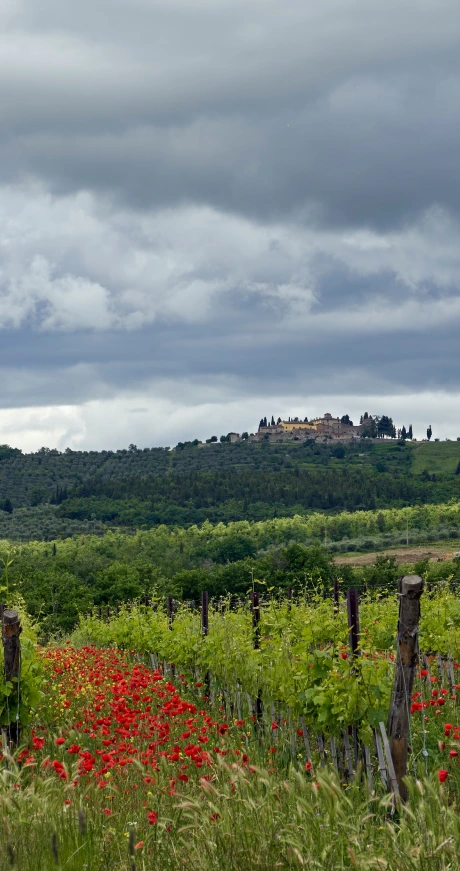
Holistic Management – Key to a Sustainable Future
Managing our food chains, and producing food that is grown in harmony with the natural cycles of the land will become ever more important as we progress through this century. The effects of industrialized farming practices on our soil and our overall health could become catastrophic unless we can collectively improve how we produce our food and the ethos behind food production.
At Ashfount Investments, we hope to encourage our partners to think holistically and embrace regenerative farming levels so that they can benefit from the vast range of social, ecological, and financial positives this method brings. By changing how we think about the way we produce our food we can improve our personal health and wealth, as well as add towards a sustainable future for our local and global communities.

